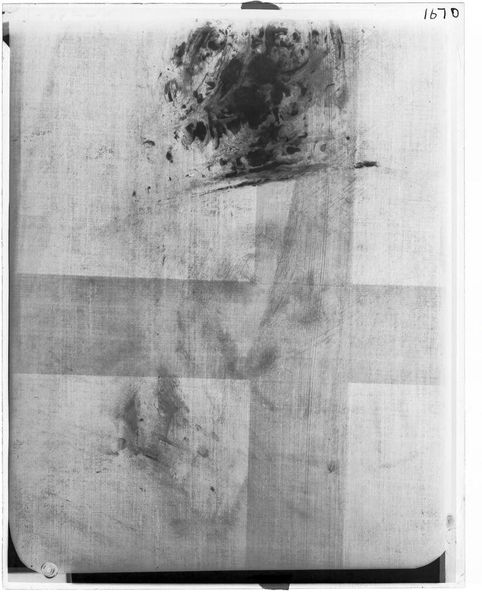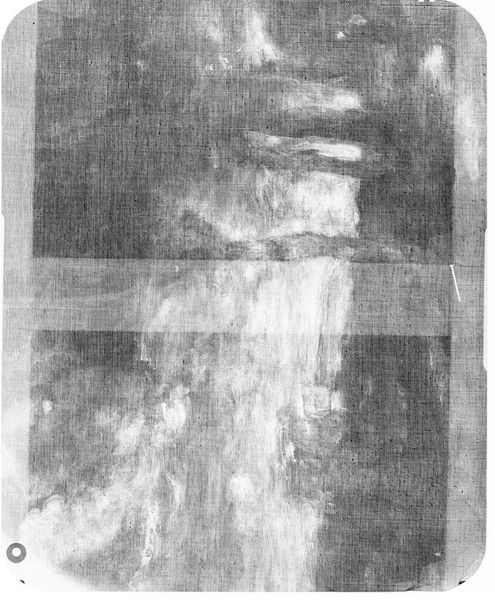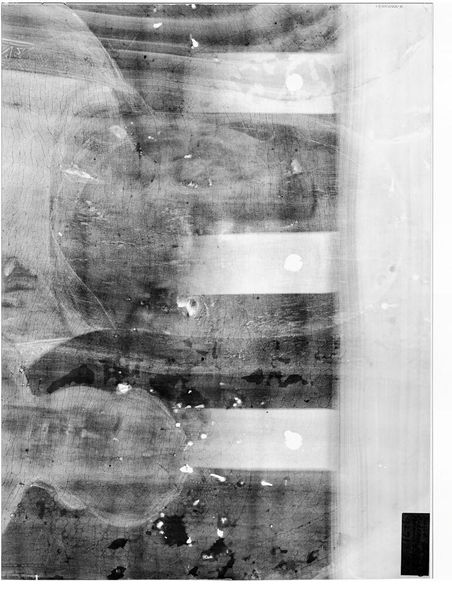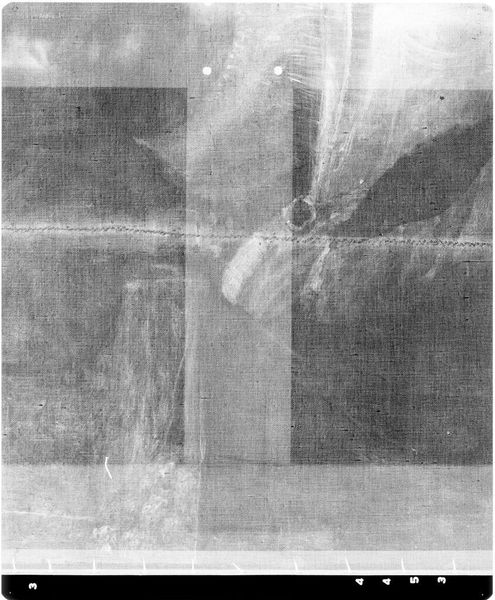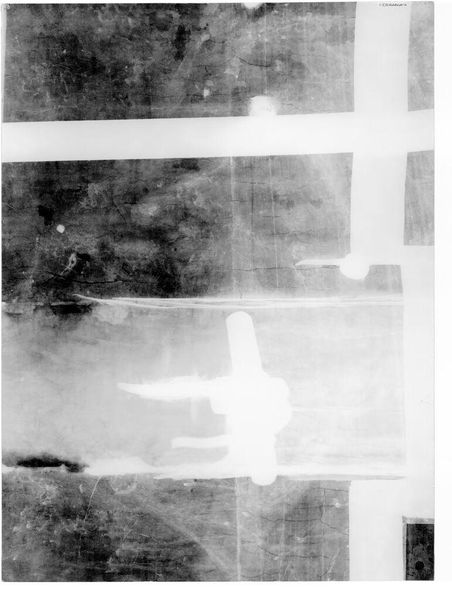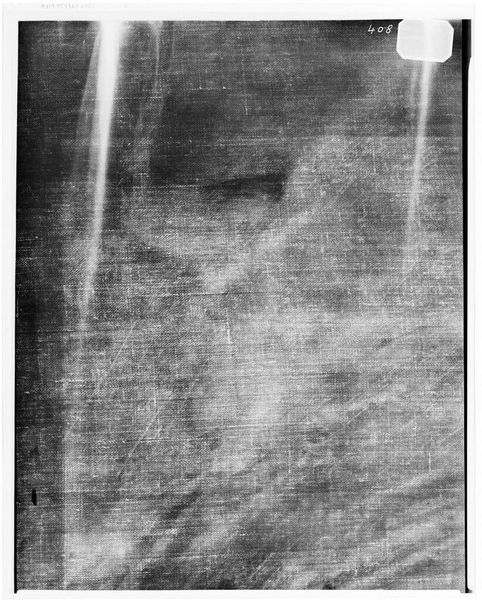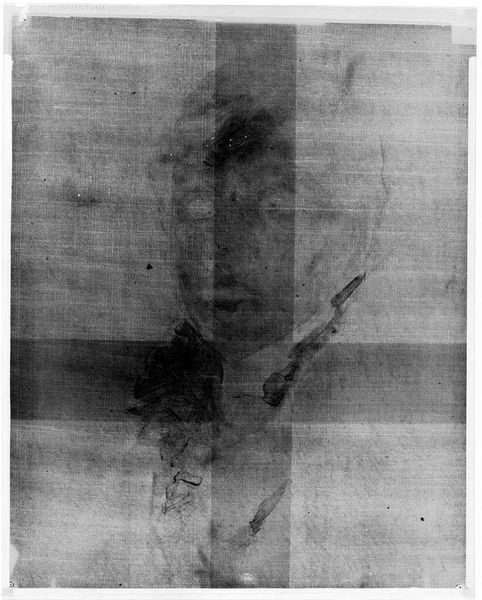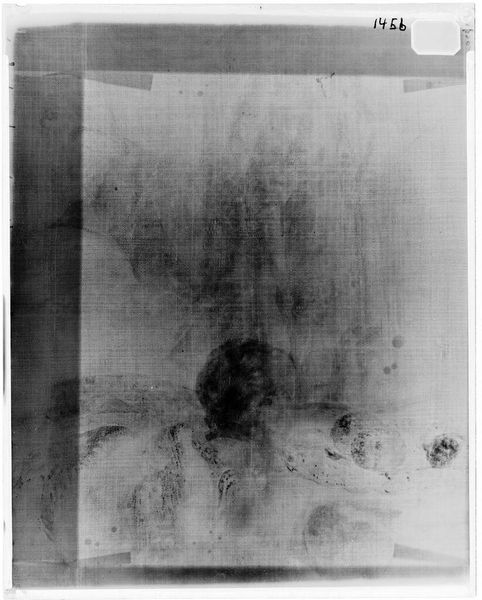
X-radiograph(s) of "Man with a Beard"
0:00
0:00
Copyright: CC0 1.0
Curator: Here we have an X-radiograph of "Man with a Beard," attributed to Rembrandt, an image that offers a glimpse beneath the surface of the visible artwork. Editor: It’s ghostly. Almost like looking at the repressed memories of a painting. The harsh light and shadow feel severe, even haunting. Curator: Absolutely. X-radiography uses X-rays to penetrate the layers of paint, revealing hidden details, underdrawings, or alterations made by the artist during the painting process. Editor: It speaks to the power dynamics inherent in image creation, and whose stories are prioritized or erased in the final product, doesn't it? It hints at a silent dialogue. Curator: Indeed. It allows us to trace the evolution of an image and contemplate the artist's intentions. Editor: Seeing the skeleton of a painting prompts reflections on the layers of history, both artistic and cultural, embedded within it. What’s preserved, what’s discarded, and why? Curator: Exactly. It is a compelling interplay between science and art, isn't it? Editor: Yes, and it challenges our notions of fixed artistic meaning.
Comments
No comments
Be the first to comment and join the conversation on the ultimate creative platform.
